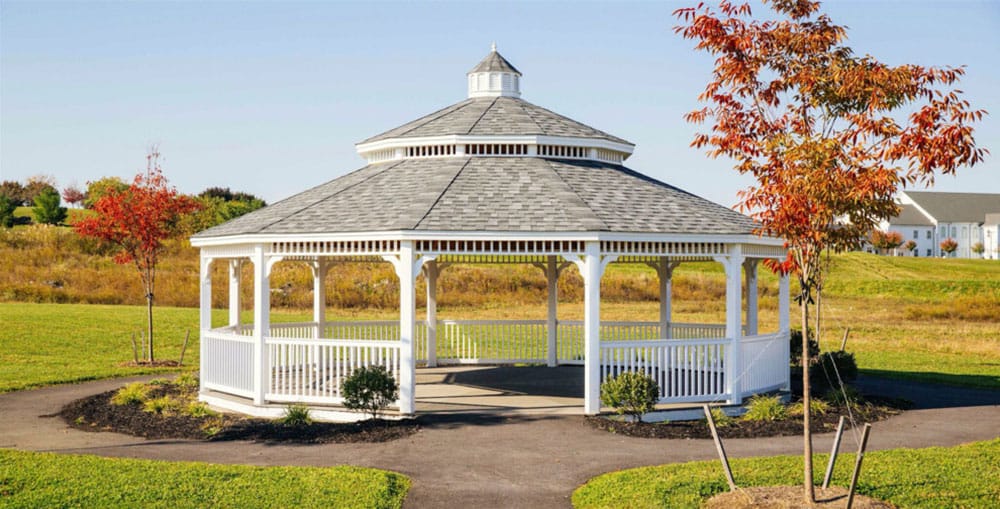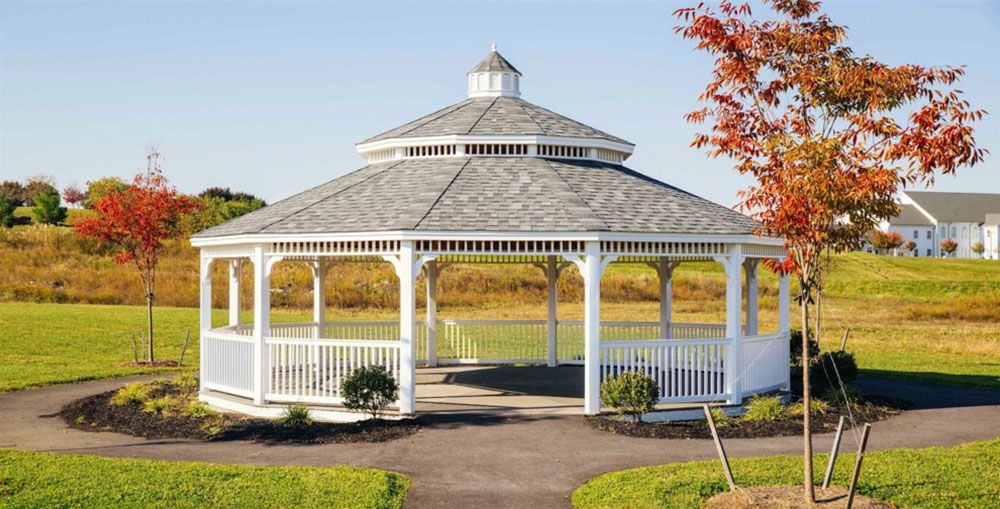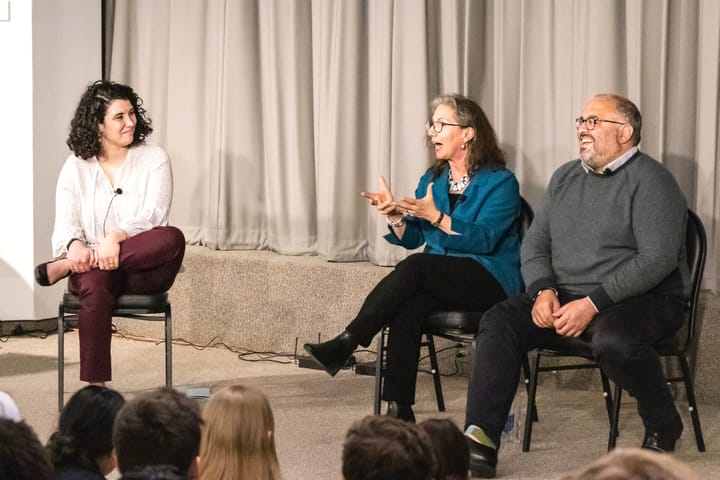Seeing Double: For More than Zero Gazebos
Seeing Double Columnist Cole Graber-Mitchell ’22 discusses why Amherst should build a gazebo (or multiple) on campus.


Amherst College should build a gazebo. Maybe even two or three. If you have a busy day, feel free to stop reading now.
But if you do have a few minutes, let me convince you why. A gazebo, for those unfamiliar, is a permanent structure consisting of only a roof and a floor. They’re common in parks and gardens because they’re nice spots to enjoy the outdoors without exposure to the sun or rain. Some are small, and some are big. Basically, gazebos are permanent versions of the tents dotted around campus.
Like the tents, gazebos would provide space to host meetings, classes, and extracurriculars outside in any suitably warm weather. But unlike the tents, gazebos would integrate well with the surrounding campus and could better meet the needs of our community.
I’ll admit, I was a little skeptical of the tents when they first went up. After imagining my poor North Carolinian co-columnist shivering in the New England chill while trying to learn about just war theory, I wrote them off as unrealistic. But over the past two years, I’ve come to love the ugly little things. Though they make it look like we’re constantly hosting a traveling carnival, the tents are wonderfully versatile and expand the space available on campus without a huge investment. Plus, there’s nothing quite as pleasant as going to office hours outdoors on a beautiful fall afternoon, something that was never possible before we had covered outdoor chairs and tables.
Not to mention that spending time outdoors is connected with better mental well-being. Even just looking at trees improves our mood and cognitive functioning. The more we can do outside, the better for us. Thankfully, there is a lot of diverse green space around campus. You can work at the Book and Plow Farm, hike through the college trail network, lounge around in an Adirondack chair, or throw a frisbee on the quad. But until we had the tents, there was no good place to do our homework or take classes outside.
However, while the tents have been great, they aren’t the best solution. For starters, they are unsightly. And while poor aesthetics never strikes me as a particularly good argument, it’s the only argument that I have ever heard against keeping the tents. We could defuse that complaint with a better option: gazebos. Gazebos could beautifully integrate with the rest of campus to the point where they don’t seem out of place. Maybe the college could get Herzog and de Meuron or some other high-falutin architectural firm to design them.
Secondly, we have too many tents right now. They’re too hard to differentiate from one another, they’re almost never at capacity, and they take up space that could be better used. Carefully planning out three gazebos — one on the first-year quad, one on Val quad, and one on the King-Wieland quad — would give us permanent capacity that we could augment with tents when needed. And since the gazebos would be permanent, the college could name them after the donors who promise to build them, replacing the horribly confusing numbers that currently refer to the tents.
Finally, permanent gazebos could be better tailored to our community’s needs than the tents. Instead of bolting rickety whiteboards to the ground where they get in the way even when not used, whiteboards could pull down from the ceiling. And the structures could be connected to electricity, eliminating the need for the extension cords currently running all around campus. Perhaps the gazebos could even have small lockboxes for portable projectors, allowing professors to host slide-based lectures outdoors. The possibilities are endless.
At this moment in history, we have to reevaluate our relationship with nature. We can continue to view nature one-dimensionally as a source of raw materials or, marginally better, as something only to conserve and enjoy recreationally. Or we can begin to actually live more outdoors, integrating our own lives with the cycles of the natural world. Gazebos, as simple as they may seem, are an investment in this new type of living.
The pandemic has given us an opportunity to experiment with our assumptions, and it turns out that not all learning has to be indoors. Let’s build some gazebos.




Comments ()